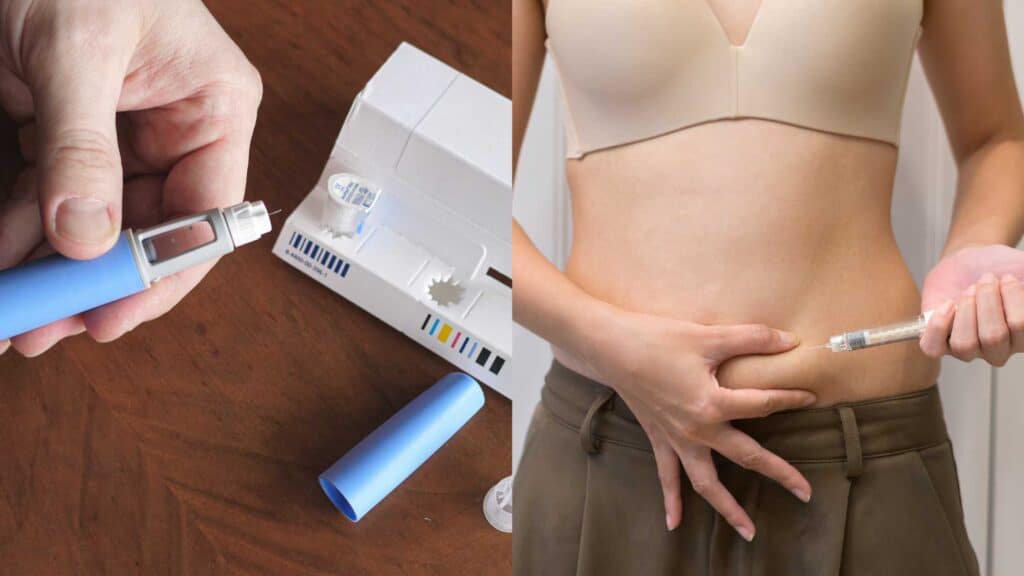Key Takeaways
- Emotional recovery after cosmetic transformation goes through predictable stages from initial elation to final integration. You must be patient and kind to yourself while navigating it.
- Anticipate physical-driven mood swings from hormones, anesthesia, etc., and schedule sleep, good nutrition, and rest to minimize emotional volatility.
- Get clear on motivations and set realistic goals before surgery by evaluating mental preparedness and aligning expectations with long-term well-being.
- Support Build a support plan with trusted friends and family, professional mental health care, and peer groups to offer hands-on assistance and emotional comfort.
- Control expectations in recovery. Measure progress objectively. Don’t compare and apply coping strategies for impatience and post-op lows.
- Make purposeful efforts to reconcile your new look with your sense of self through journaling, new self-care rituals, and if necessary, counseling to work through nuanced emotions.
Emotional recovery after cosmetic transformation is the psychological and social adaptation process that follows surgical or non-surgical aesthetic alterations. It encompasses mood swings, refreshed body image, and evolving social responses across weeks to months.
These emotional changes include your preexisting mental status, your support system, and the realistic expectations set by your clinician. Below, I detail typical emotional stages, real-life coping strategies, and when to get professional assistance.
The Emotional Rollercoaster
Recovering from cosmetic surgery is an emotional rollercoaster, with days and weeks of different feelings. Physical healing and emotional recovery go hand in hand. Anticipate mood swings and highs and lows of confidence, and build in support and easy coping mechanisms.
1. Initial Elation
Right after surgery most folks experience a rush of energy and elation. That rush is from knowing the procedure is completed and from optimism about the new aesthetic. Initial pictures and pain relief enhance happiness and positivity.
This “honeymoon phase” can dissipate when swelling and bruising manifest and reality starts to supplant anticipation.
2. The Post-Op Blues
About the first week, some patients experience depression, frustration, or blues. Pain, anesthesia fog, bad sleep and surface evidence of surgery—bruises, swelling—can all intensify these emotions. Others say they feel physically and emotionally whacked, like they have been sideswept by a semi.
Fatigue intensifies grumps. A little depression can creep in. It is common, and it is not a failure. If low mood is severe or persistent, get professional help.
3. Impatient Frustration
It’s not a tidy timetable that healing adheres to. Swelling and sluggish transformation make you impatient. Patients can be nitpickers, obsessing about results, like being slightly off position or firmness from their mental picture.
Measuring my recovery against others was only making me more anxious. Every body heals in its own way. Setting expectations that the best results take weeks to months diminishes frustration.
Easy tricks, such as taking progress pictures every couple of weeks, provide visual evidence of your slow transformation.
4. Tentative Acceptance
As swelling deflates, scars toughen, and emotions begin to readjust. Acceptance is uneven; there can be relief mixed with lingering doubts. Building coping mechanisms, such as confiding in trusted friends, attending a support group, or visiting a therapist, mitigates ambivalent emotions.
Something like a daily gratitude journal, brief mindfulness exercises, and reframing negative thoughts all work. These instruments assist individuals in transitioning from perpetual judgment to actionable compassion.
5. Final Integration
After a few weeks to months, many patients are accustomed to their new look and feel this is the way they were meant to appear. Body satisfaction typically rises and emotional energy returns.
Looking back on the experience emphasizes stress and development. Take advantage of this period to redouble positive body image and reestablish routine while remaining cognizant that small uncertainties might still sneak in.
Why It Happens
Emotional ups and downs after a cosmetic change come from several linked sources: psychological history, hormone shifts, physical pain, and the mental work of fitting a new look into who you are. The causes are usually complex. For others, it was former verbal bullying or current peer pressure that nudged them into surgery.
Two interviewees reported that verbal bullying was the primary reason for making that choice. Others cite chronic body image issues, jealousy, or a desire to impress as motivators. These motives influence the way individuals react emotionally during recovery.
Hormonal Shifts
Surgery and the related stress can alter your hormone levels and thereby your mood. Stress hormones such as cortisol rise with trauma and pain, which can cause fatigue, irritability, or sudden mood swings that seem uncharacteristic. Women may observe interactions with their menstrual cycles or hormonal birth control.
These imbalances tend to be temporary, but they can make emotional reactions more acute and bounce back seem more sluggish. Be on the lookout for stubborn sleep issues, fluctuations in weight, or profound tiredness. Those symptoms indicate you need to see your doctor.
Supportive measures consist of consistent sleep, nutritious meals with adequate protein and healthy fats, and basic stress-reduction techniques like brief breathing exercises or gentle walks. Getting rest and nutrition helps your hormones settle and makes emotions easier to handle.
Anesthesia Effects
Anesthesia can linger cognitively and emotionally. Folk generally experience fogginess, nausea, and lethargy in the initial days. Mind fog can drag, and mood can wobble until the medications wash out.
Sleep disturbance amplifies mood problems. Maintain a recovery log to record fatigue, nausea, and mood changes. These provide doctors with valuable information and demonstrate improvements over time. Anticipate slow progress. If the confusion or serious mood symptoms last more than a couple of weeks, get a medical review.
Expectation vs. Reality
If your expectations are too high, you just set yourself up to be disappointed. If someone expects surgery to erase the deep shame from being bullied as a child or to fix a longstanding psychiatric issue such as body dysmorphia, the outcome may fall short of those expectations.
Contrast expected results with real healing phases and utilize impartial instruments like body area contentment scales to quantify progress. If the result isn’t what you wish, close the gap early with your surgeon or a mental health professional to minimize regret.
Identity Disruption
- Feeling untethered, like the person staring back in the mirror is a stranger.
- Worry that friends or partners will treat you differently.
- Mourning your ‘old’ self or coping skills.
- Pressure to continue pleasing or escape from that pressure.
These identity changes require time and effort. Repair self-connections by labeling emotions, establishing bite-sized objectives, and making transformation a habit.
Before The Procedure
Getting your head in the right place before cosmetic surgery lowers your risk of post-operative distress. This section dissects practical readiness checks and steps to measure preparedness, set realistic expectations, and construct a support plan. Take the checklist to identify what areas you need to work on, then explore the mental, goal-setting, and support strategies that help most patients navigate those early emotional highs and lows.
Mental Readiness
Evaluate mood patterns and stress before booking surgery. Track sleep, appetite, and daily energy for at least two weeks. Note any major mood swings, persistent sadness, or avoidance of social life. Nearly 40% of patients report emotional lows or regret within the first two weeks after surgery, so early signs matter.
Pinpoint triggers that might complicate recovery. Previous trauma, recent breakups, work stress or self-esteem concerns can leave you more susceptible. If you’re peeling back unhealed trauma or weighty anxiety, see a mental health professional first.
Practice simple mental skills. Mindfulness breathing, short guided meditations, and progressive muscle relaxation three to five times a week build resilience. These gentle daily walks and light exercise improve your mood and your stamina. Begin these a few weeks before surgery as a form of body preparation.
List coping strategies to utilize during recovery. Examples: breathing exercises for acute worry, phone a chosen friend for reassurance, use a distraction box with books or crafts, and set timed check-ins with a therapist. Maintain a small strategy card in sight with a couple of strategies you believe in.
Realistic Goals
| Motivation | Expected Outcome | Potential Risk |
|---|---|---|
| Improve self-confidence | Subtle change in features over months | Temporary swelling, bruising, mismatch with ideal image |
| Correct medical issue | Functional improvement plus aesthetic change | Scarring, need for revision |
| Social pressure | Short-term approval | Regret, ongoing dissatisfaction |
Distinguish need from want by asking how surgery fits your long-term life. If outside pressure is a primary motivator, stop and reconsider. Cosmetic procedures can turn into an approval rat race. Establish boundaries to avoid the addiction.

Match aspirations with authenticity and health. If short recovery time interferes with work or caregiving, reschedule. Know the disconnect between what you’re expecting to look like and how you’ll actually look through weeks of swelling and bruising that could go on for months.
Establish a monthly progress photo habit. Compare pictures monthly, not daily, to keep from obsessing and to comfort yourself as the swelling dissipates.
Support Planning
- Practical help includes rides to appointments, assistance with meals, medication reminders, and light house chores.
- Emotional help: One or two trusted contacts for calls, a therapist on retainer, and a peer who has had similar surgery.
- Medical contacts: surgeon’s office, nurse line, and local urgent care numbers.
- Comfort resources include playlists, a reading list, and a small packet of favorite snacks.
Enlist selected friends or family in medication timing and mild walk scheduling. Schedule check-ins and set protocols for the emotional lows, like who to call first. Have a quick-access list of contacts to calm down in hard moments.
Navigating Your New Self
Recovering from a changed look requires clear action and consistent work. Anticipate the first post-surgical mirror encounter to feel strange and unnerving. That first mirror shock is universal. It’s a primal reaction to witnessing rapid transformation in your visage or physique. Swelling, bruising, dressings, and numbness all skew the image you recognize.
Understand that these are short term and that real results can take months as your tissues settle and scars mature.
Embrace the emotional challenge of adjusting to your altered physical appearance
Identify your emotions when you gaze into the mirror. Write them or speak them to a confidant. That aids in piercing through haze and renders the emotions concrete instead of abstract. Anticipate a mix of relief, surprise, insecurity, or even mourning for your old appearance. Those emotions are normal.
The right mind-set before surgery, which includes defining realistic objectives, understanding healing time frames, and blocking out downtime, lowers stress and helps pre-op and post-op days go more smoothly.
Identify and process conflicting feelings about your former self and current self
You’ll be loyal to your old self while desiring the new. That conflict can generate guilt or confusion. Use small rituals to bridge the two selves: keep a photo of your pre-op self in a private place, or journal about what the old self meant to you and what you hope the new self will allow.
If the feelings persist, talk with a body image or cosmetic-savvy therapist. For some, the accommodation smoothes out in weeks. For others, it takes months. Give yourself that time, pressure-free.
Develop new self-care routines that support both emotional and physical healing
Create a daily plan that addresses basic needs: sleep, gentle movement, wound care, hydration, and nutrition. Add quick, low-risk activities known to increase mood, such as reading, light walks, or breathing exercises. Plan mirror time in short, calm sessions to reduce shock and cultivate familiarity.
If scars or swelling irritate you, apply recommended creams or dressings as directed by your clinician. Social self-care matters too; line up a few friends or family members who can provide steady, honest support during the first weeks.
Foster a positive outlook by focusing on the benefits and meaningful ways your transformation enhances your life
List practical gains: improved comfort, fit of clothing, or reduced pain and personal gains like more confidence in certain settings. Reframe daily feedback by jotting down one tiny positive change each day.
Support from close people provides perspective when doubt creeps in and their encouragement can be a powerful asset in early recovery. Emotional responses evolve; what seems weird now becomes a badge of honor down the road.
Building Your Support System
Psychological healing following physical transformation thrives on a well-defined course of interpersonal and vocational encouragement. This part breaks down why support counts, where to source it, and how to make it continue serving you as swelling subsides and emotions shift.
Professional Help
Check in with a licensed mental health professional when emotions weigh or mystify. Therapists can assist in untangling grief, anxiety, or identity shifts that occasionally accompany a physical transformation. Inquire about both short-term coping techniques and longer-term strategies for preventing chronic worry or body image issues.
If symptoms of depression or obsessive thoughts about your appearance persist, get intervention soon enough to reduce the risk of more serious problems. Incorporate therapy into your recovery plan. Schedule sessions alongside medical follow-ups and share progress notes with your care team when appropriate.
Most clinics can refer a counselor familiar with cosmetic patients, and some even provide telehealth options for added convenience.
Personal Circle
- Partner or spouse
- Close family members (parent, sibling)
- A best friend or trusted peer
- A neighbor or coworker who checks in regularly
- Your surgeon’s nurse or patient coordinator
Be honest about your recovery when you’re sharing with those on your list. Let them know what kind of support you want: distraction, practical help, or straightforward feedback about changes.
Have a trusted friend be a consistent check-in, such as a weekly video call or a daily message thread, to monitor mood, sleep, and mini victories. Have them provide warmth and honest compliments and remind you that apparent transformations require weeks to months to stabilize.
If anyone has a hard time reacting well, set boundaries to safeguard your heart.
Online Communities
Locate moderated forums and social groups around cosmetic recovery for peer support. Blog about particular worries, such as when that swelling will subside, mood swings, and insomnia, and swap notes with those in the know.
Leverage the power of groups to learn coping mechanisms, such as breathing exercises, mini walks, or gentle yoga to pacify nerves and calm anxiety. Keep a schedule for your online contact, including weekly forum updates, to establish some continuity and track mood fluctuations.
Follow little victories and energy fluctuations in a secret record so you can identify trends and bring them into therapy. Be careful with comparisons and curate feeds to minimize exposure to triggering pictures.
Building your support system and trust in online peers can take six weeks or more, so remain patient and keep self-compassion front and center.
The Mirror’s Other Side
Cosmetic alteration frequently carries with it an emotional undertow more powerful than the tangible movement. When a patient initially looks in the mirror post-surgery, they may experience strangeness and discomfort with this new version of themselves. That initial glimpse can induce shock, estrangement, or anesthesia. These responses are in an initial stage of adaptation, not a final determination of success or failure.
Emotions are malleable. What unnerves us initially can become a point of pride after weeks or months. Emotional scars and unresolved trauma can come up while the body is healing. Old bad self-beliefs will sometimes resurface post-procedure in new incarnations. Anyone who wanted to change in order to avoid criticism might still harbor an internalized critic.
Waves of remorse or doubt are common and can come at unpredictable moments in the healing schedule. It helps to anticipate that acclimation period. Some bounce from disorientation and guilt within weeks, while others require months to align exterior and self. Healing work that addresses these internal wounds enhances outcomes.
Practical strategies encompass guided reflection, journaling certain emotions when peering in the mirror, and naming memories linked to self-image. Seeking out a body-image or trauma-focused therapist could break the cycle. Peer support groups or talking with others who have had similar procedures provides context and lessens isolation.
Social support from friends and family is critical to emotional health in recovery. Tangible assistance, such as help with routine tasks, truthful but compassionate feedback, or joint adventures, can smooth the transition. Emotional maturity and strength often come after cautious healing.
The desire for improved looks can motivate healthier habits, such as better sleep, regular exercise, and avoidance of harmful behaviors that cause pain. These lifestyle shifts frequently support a virtuous cycle in which feeling better encourages doing what makes you healthier and happier. Enhanced confidence can impact multiple areas of life, from social interaction to career to even mundane day-to-day tasks.
Studies show patients experience marked increases in self-esteem and social confidence as long as five years post-op, demonstrating long-tail potential far beyond the initial shock. LEARN from the mirror’s other side to champion more gentle beauty care. Provide particular moments of waver and bounce to assist others not feel solitary.
Demand from your clinicians transparent pre- and post-op counseling. Insist on referrals to mental health professionals when appropriate. Advocate for care teams that address emotional healing as part of the medical plan, not an add-on.
Conclusion
It takes time and steady nurture to heal emotionally from a cosmetic transformation. These small victories carve out a more defined sense of self. Monitor mood, sleep, and pain. Mark days that feel better and what contributed. Rely on those who hear without criticism. Express needs in simple language. If strong doubt or shame lingers, seek out a counselor who knows body image work.
Use simple rituals to anchor daily life. Take walks, have regular meals, and establish bed times. Experiment with one new hobby that is low-risk. Let your photos marinate for a week and then judge them. Anticipate highs and lows and use them as cues to modify care, not as evidence of defeat.
Need a routine-friendly plan or tools. Request a guide or checklist.
Frequently Asked Questions
What emotional stages are common after a cosmetic transformation?
Most go through relief, exhilaration, tentativeness, mourning the old self, and eventual acceptance. Timing is variable, but these phases are typical and frequently overlap.
Why do I feel unexpected sadness after surgery?
That sadness can arise from hormonal fluctuations, healing pain, new body image, or failed expectations. It is a natural reaction and typically diminishes with time and care.
How long does emotional recovery typically take?
Most people experience a gradual improvement over weeks to months. Complete emotional adjustment may require six to twelve months, varying with the procedure and individual fortitude.
What can I do before the procedure to protect my mental health?
Do your research, have realistic expectations, meet with a therapist if necessary, and prepare a support system. Defined expectations minimize shock and facilitate healing.
When should I seek professional help for post-procedure emotions?
Seek help if the intense sadness, anxiety, or withdrawal persists beyond two weeks, or if you harbor thoughts of self-harm. Early intervention is better.
How can friends and family best support someone after a transformation?
Hear them out, provide practical support, respect boundaries, and promote checkups. Support that recognizes feelings affirms the individual’s journey.
Can I improve my self-image during recovery?
Yes. Compassion, goals, and talk can help you recover emotionally after cosmetic changes.




